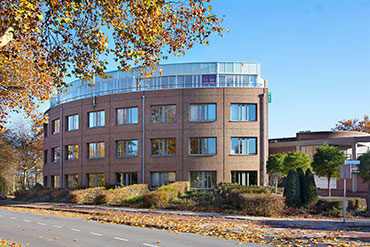Mono-manure fermentation
In the case of mono-manure fermentation, as the word says, only manure will be fermented. Up to 2017 it was allowed to mix 5% of co-products. Since 2018 this is no longer allowed in the Netherlands. Other countries might have different regulations regarding the use of co-products. The advantage of mono-manure fermentation is that the plant only runs on proprietary manure. Therefore the process is not dependent on externally supplied products.
The process starts and ends with manure. The manure goes (preferably as fresh as possible) via a small intermediate storage, to the digester. In the digester, the manure is heated and mixed, and the biogas is created. This is temporarily stored under the roof. When the manure has been in the digester long enough, usually 30 to 40 days, the digestate (fermented manure) is stored in a manure silo. This will be spread out as a manure on the land.
CHP
Biogas is used in various ways. In most cases a CHP (Combined Heat and Power) is applied. A CHP produces electricity and heat. A part of the heat is used to keep the fermenter at a steady temperature, the rest goes to another application, such as heating of a stable or manure processing. The electricity can be used on the farm and can be fed into the electricity grid. CHP projects are only profitable when there is a useful application for the heat.
Heat
If there is a particular need for heat, the biogas can also be used in a biogas boiler. This can be interesting for closed pig farms in particular, or for a dairy farmer who processes the milk himself. If there is insufficient energy consumption on the company’s own farm, the biogas can also be disposed towards third parties. For example, with a biogas pipeline towards a nearby swimming pool or industry. By transporting the biogas instead of the heat, expensive insulated heat pipes are not required.
Green gas
As a last option, the biogas can also be upgraded to natural gas quality, also known as green gas. This has the same composition as natural gas. It can be injected into the natural gas grid or used as transport fuel (CNG). For example, a farmer convert a tractor into CNG, or it can be delivered to the bus companies, which are increasingly switching to CNG. Green gas projects are particularly interesting for larger fermentation plants.
Mono-manure fermentation can be made cost-effective if several plants connect to one Bio-HUB, which transports the biogas to an industrial customer or a gas reprocessing plant, which upgrades the biogas to green gas.
The best option is different for each situation. It is important with regard to subsidization and licensing, that all options are possible and treated equally


